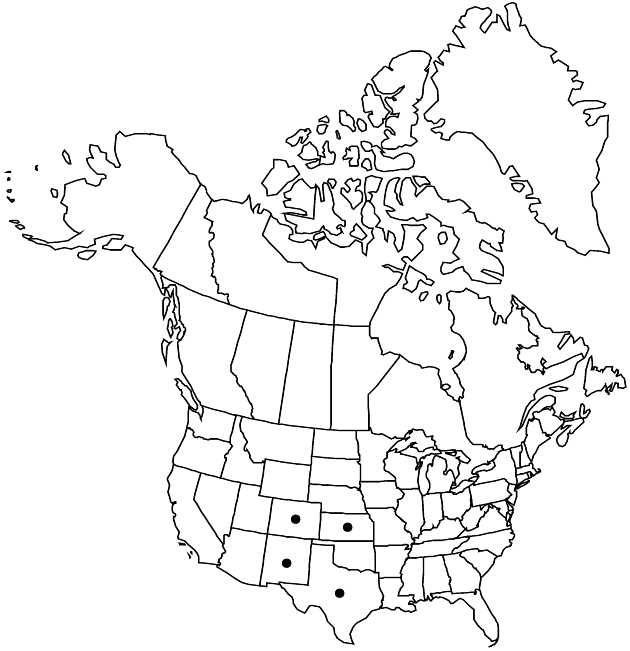Thymophylla aurea
in N. L. Britton and A. Brown, Ill. Fl. N. U.S. 3: 453. 1898.
Annuals, green, to 20 (–30) cm, glabrous or puberulent. Stems erect (branched from bases). Leaves alternate; blades 15–40 mm overall, lobed, lobes 5–13, linear. Peduncles 10–70 mm, glabrous or puberulent. Calyculi 0, or of 1–2 subulate bractlets, lengths less than 1/2 phyllaries. Involucres obconic to campanulate, 5–6 mm. Phyllaries 12–15, margins of outer distinct almost to bases, abaxial faces glabrous or puberulent. Ray-florets 8–12; corollas bright-yellow, laminae 4–6 × 2–3 mm. Disc-florets 30–45; corollas yellow, 3 mm. Cypselae 3 mm; pappi either of erose scales 0.3–0.6 mm, or of 3–5-aristate scales 2–3 mm.
Distribution

Colo., Kans., N.Mex., Tex., n Mexico
Discussion
Varieties 2 (2 in the flora).
The two varieties of Thymophylla aurea are sometimes found in mixed populations, which may include intermediate plants.
Selected References
None.
Key
| 1 | Pappi of 18–20, 3–5-aristate scales 2–3 mm | Thymophylla aurea var. polychaeta |
| 1 | Pappi of 8–10 erose scales 0.3–0.6 mm | Thymophylla aurea var. aurea |